December 4, 2020
December 3, 2020
Hybrid working presents us with a once in a generation opportunity
by Michael Cockburn • Comment, Coworking, Flexible working, Technology
 In the face of the revolutionary and long-lasting changes to workplaces across the world resulting from the pandemic, some commentators have suggested that the wide-spread necessity of adopting remote working practices may have made the office obsolete. However, such a dramatic upheaval to the very foundation of the workplace and working dynamic won’t come without a cost, and new data suggests that perhaps the office isn’t the dinosaur many assumed, but still a central pillar to effective businesses as part of a hybrid working strategy. (more…)
In the face of the revolutionary and long-lasting changes to workplaces across the world resulting from the pandemic, some commentators have suggested that the wide-spread necessity of adopting remote working practices may have made the office obsolete. However, such a dramatic upheaval to the very foundation of the workplace and working dynamic won’t come without a cost, and new data suggests that perhaps the office isn’t the dinosaur many assumed, but still a central pillar to effective businesses as part of a hybrid working strategy. (more…)
December 2, 2020
Creative firms have most to lose from a loss of serendipity
by Gary Chandler • Comment, Workplace design
 Most of the analysis about the effects of the 2020 pandemic on people’s working lives has tended to involve grand statements about new normals and the death of this or that, as if everybody wants the same things, has the same personal circumstances, works in the same ways, the same places and same sectors. (more…)
Most of the analysis about the effects of the 2020 pandemic on people’s working lives has tended to involve grand statements about new normals and the death of this or that, as if everybody wants the same things, has the same personal circumstances, works in the same ways, the same places and same sectors. (more…)
December 1, 2020
The great lesson of 2020 for small businesses is to be ready for anything
by Annil Chandel • Business, Comment
 The repercussions of Covid-19 for the small business community have been particularly ruinous. Recent figures paint a worrying picture, revealing that approximately 76,300 SMEs in London alone ceased operations completely as a direct result of the pandemic, with lockdowns costing from £30,000 to £75,000 for one in ten small businesses. As the most vulnerable business segment in the current crisis, SMEs needed the biggest support and, by the end of April, had already received over £4 billion via the government’s CBIL scheme. (more…)
The repercussions of Covid-19 for the small business community have been particularly ruinous. Recent figures paint a worrying picture, revealing that approximately 76,300 SMEs in London alone ceased operations completely as a direct result of the pandemic, with lockdowns costing from £30,000 to £75,000 for one in ten small businesses. As the most vulnerable business segment in the current crisis, SMEs needed the biggest support and, by the end of April, had already received over £4 billion via the government’s CBIL scheme. (more…)
November 30, 2020
We need to understand and channel workplace conflict in the right way
by Jon Maddison • Comment, Workplace
 Earlier this month, in a sudden and unexpected turn of events, the prime minister’s chief adviser, Dominic Cummings, walked out of 10 Downing Street for the last time, having resigned/been asked to leave, depending on whose account of the episode you believe. However, the affair unfolded in reality, it seems clear that the departure of Cummings and Director of Communications, Lee Cain, was precipitated by workplace conflict and a series of internal disagreements, which had pushed their relationships with certain colleagues to breaking point. (more…)
Earlier this month, in a sudden and unexpected turn of events, the prime minister’s chief adviser, Dominic Cummings, walked out of 10 Downing Street for the last time, having resigned/been asked to leave, depending on whose account of the episode you believe. However, the affair unfolded in reality, it seems clear that the departure of Cummings and Director of Communications, Lee Cain, was precipitated by workplace conflict and a series of internal disagreements, which had pushed their relationships with certain colleagues to breaking point. (more…)
November 25, 2020
Change like everyone is watching
by Neil Usher • Business, Comment
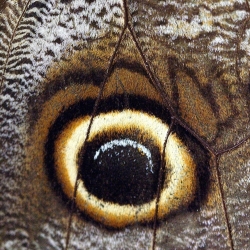 At a time when we aren’t generally supposed to get within two metres of each other, depending on what the rules happen to be today (or part day), there’s a lot of embracing going on. Almost in some quarters as though it’s a resigned acceptance. You know the curve, with the part at the end where having denied it, got angry then depressed and reluctantly bargained with it, we finally get on with it. Which of course isn’t how anything happens at all. But that’s what us dedicate followers of Covid-era fashion are supposedly doing: embracing change. (more…)
At a time when we aren’t generally supposed to get within two metres of each other, depending on what the rules happen to be today (or part day), there’s a lot of embracing going on. Almost in some quarters as though it’s a resigned acceptance. You know the curve, with the part at the end where having denied it, got angry then depressed and reluctantly bargained with it, we finally get on with it. Which of course isn’t how anything happens at all. But that’s what us dedicate followers of Covid-era fashion are supposedly doing: embracing change. (more…)
November 23, 2020
The crisis is making us more authentically human at work
by Jill Dark • Comment, Flexible working, Wellbeing, Workplace design
 Let the dogs bark, let the kid dance, admit that you are in the basement because your spouse is occupying the kitchen. It takes bravery to let the new reality shine. In previous circumstances, your dog starting to bark like crazy while you are on a work video call with the CEO of a company may have been mortifying. But now, instead, the shared reality of both participants working from home gives employees and employers the chance to gain a little more insight into each other’s lives. (more…)
Let the dogs bark, let the kid dance, admit that you are in the basement because your spouse is occupying the kitchen. It takes bravery to let the new reality shine. In previous circumstances, your dog starting to bark like crazy while you are on a work video call with the CEO of a company may have been mortifying. But now, instead, the shared reality of both participants working from home gives employees and employers the chance to gain a little more insight into each other’s lives. (more…)
November 20, 2020
HR professionals must seek a new connection with the IT team
by Joseph Morley • Comment, Technology
 It has now been more than eight months since the government first advised people to work from home if possible, due to COVID-19. The shift to remote working happened suddenly in March and quickly became part of everyday life; in April 2020 alone, 47 percent of people in employment did some work at home, compared to just 16 percent in the whole of 2019. IT teams were extremely successful in getting staff up-and-running with the right technology, but there was little time for organisations to fully train users before driving adoption, or personalise the approach based on individual need. This places a new onus on HR teams. (more…)
It has now been more than eight months since the government first advised people to work from home if possible, due to COVID-19. The shift to remote working happened suddenly in March and quickly became part of everyday life; in April 2020 alone, 47 percent of people in employment did some work at home, compared to just 16 percent in the whole of 2019. IT teams were extremely successful in getting staff up-and-running with the right technology, but there was little time for organisations to fully train users before driving adoption, or personalise the approach based on individual need. This places a new onus on HR teams. (more…)
November 19, 2020
Covid-19 is levelling the playing field for disabled workers
by Ruby Gullon • Comment, Flexible working, Wellbeing
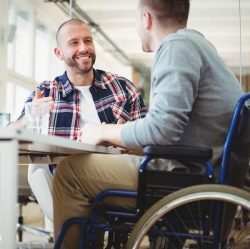 As many of us cope with yet another lockdown, optimism is easy to misplace but, for disabled workers, this could result in monumental change for future employment. On the month commencing the 25th anniversary of the Disability Discrimination Act and the run-up to International Day of Disabled Persons, could this be the final push for change? As we swing in and out of remote-working, whether you love it or loathe it, one thing is abundantly clear – it can be done. Something that the 2 billion people currently living with disabilities have always known. Life can be accessible anywhere if you put your mind to it. (more…)
As many of us cope with yet another lockdown, optimism is easy to misplace but, for disabled workers, this could result in monumental change for future employment. On the month commencing the 25th anniversary of the Disability Discrimination Act and the run-up to International Day of Disabled Persons, could this be the final push for change? As we swing in and out of remote-working, whether you love it or loathe it, one thing is abundantly clear – it can be done. Something that the 2 billion people currently living with disabilities have always known. Life can be accessible anywhere if you put your mind to it. (more…)
November 12, 2020
Stepping back into the workplace arena
by Rachel Houghton • Comment
 Dr Brené Brown is one of those individuals whom I find myself channelling, particularly during challenging times. Her views on the power of vulnerability and her call to be brave and ‘step into the arena’ have shaped my career. In a crisis, we need to be courageous and ready for the fight. It’s not just about rolling with the punches. It’s about knowing that it’s ok to get knocked down, because there will be someone to help you get back up. (more…)
Dr Brené Brown is one of those individuals whom I find myself channelling, particularly during challenging times. Her views on the power of vulnerability and her call to be brave and ‘step into the arena’ have shaped my career. In a crisis, we need to be courageous and ready for the fight. It’s not just about rolling with the punches. It’s about knowing that it’s ok to get knocked down, because there will be someone to help you get back up. (more…)
November 11, 2020
Burnout, stress and disconnection are now our most urgent workplace mental health issues
by Catherine Flynn • Comment, Flexible working, Wellbeing
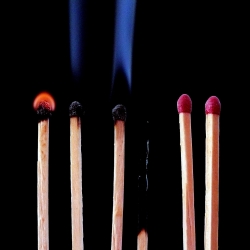 This has been a tough year all round, particularly with the COVID-19 pandemic continuing to cause seismic shifts in how we live and work. Surveys across various countries indicate that employees are experiencing more feelings of burnout, stress and disconnection as the pandemic is taking a toll on people’s mental health. What’s causing this and what can we do to combat it? (more…)
This has been a tough year all round, particularly with the COVID-19 pandemic continuing to cause seismic shifts in how we live and work. Surveys across various countries indicate that employees are experiencing more feelings of burnout, stress and disconnection as the pandemic is taking a toll on people’s mental health. What’s causing this and what can we do to combat it? (more…)






 Yes.
Yes.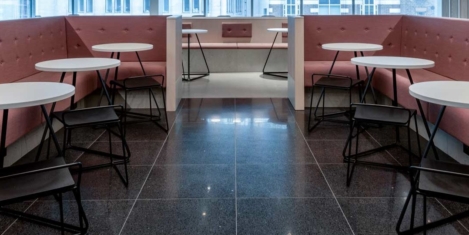




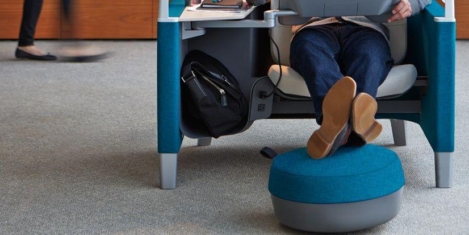













December 4, 2020
The lost art of office furniture peacocking and the growing mental health crisis at work
by Mark Eltringham • Comment, Technology, Wellbeing, Workplace design